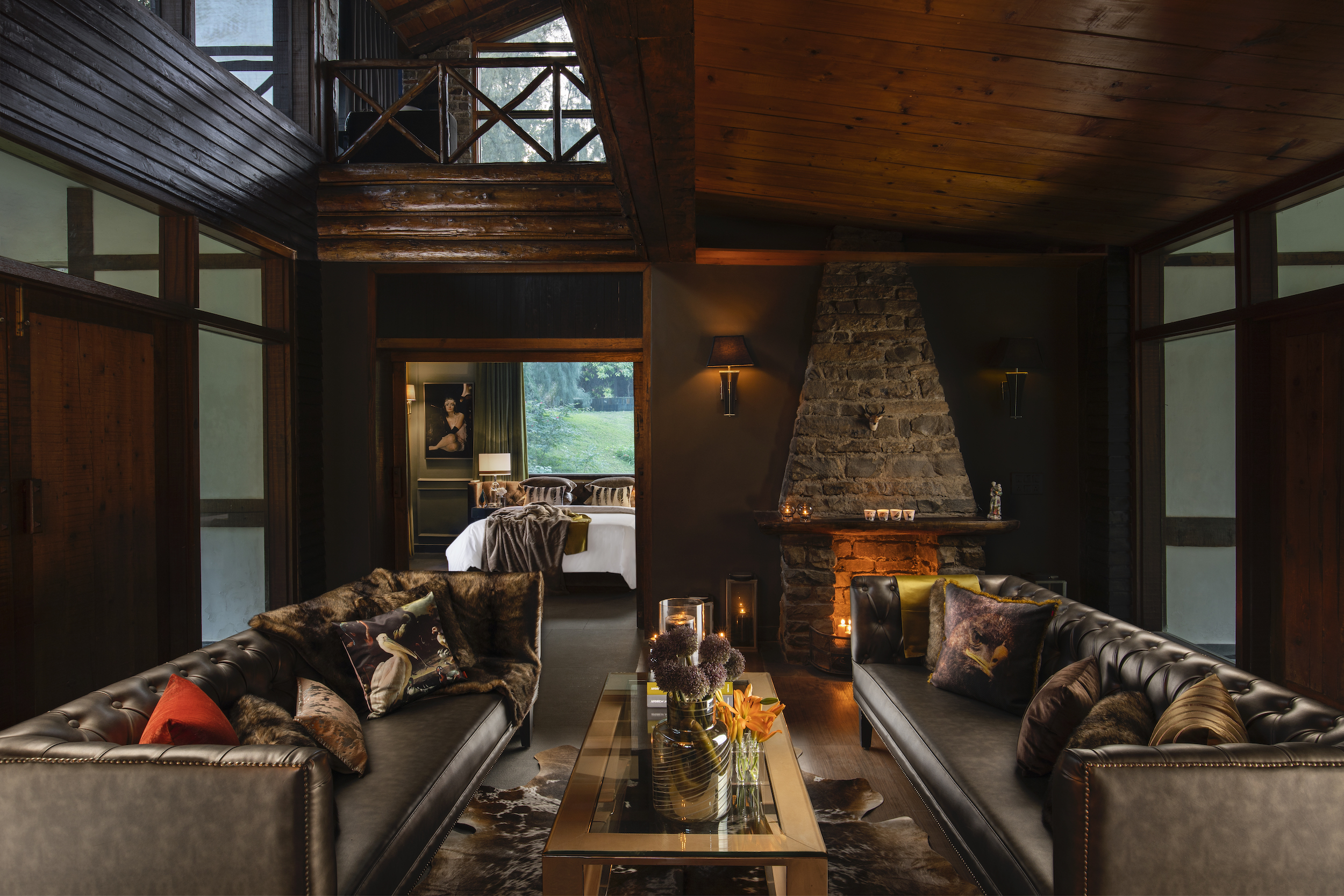The New Delhi-based designer takes cues from darkness to create playful and immersive meta-luxury spaces
As I sit across from him in his New Delhi studio, it’s hard to differentiate between Sanjyt Syngh the person and Sanjyt Syngh the designer. “It’s not a job for me. It’s a way of life. Even when I’m in bed, I have a sketchbook and my laptop at arm’s length. I am constantly designing. The best ideas come to me at 3am when I am curled up in bed and it’s all dark,” says the New-Delhi based designer whose Stygian signature is well-recognised in India’s meta-luxury design firmament. As I scan the room, I marvel at the blackness–and how, despite its enveloping presence, the walls surrender to the light. “Dark spaces inspire me. Black inspires me. 99% of my wardrobe is black,” he continues, his fingers skimming the rim of a gilt-edged mug.
Syngh’s style isn’t the obvious choice for discerning Indian homeowners. “I am somewhat tired of the myth that dark colours shrink a space,” he rues. “The spaces I design challenge that belief.” Syngh’s clients share similar profiles: They’re all well-travelled, maximalists, and looking for unique spaces. “My aesthetic is very global and my projects look like they could be from anywhere in the world,” he avers.
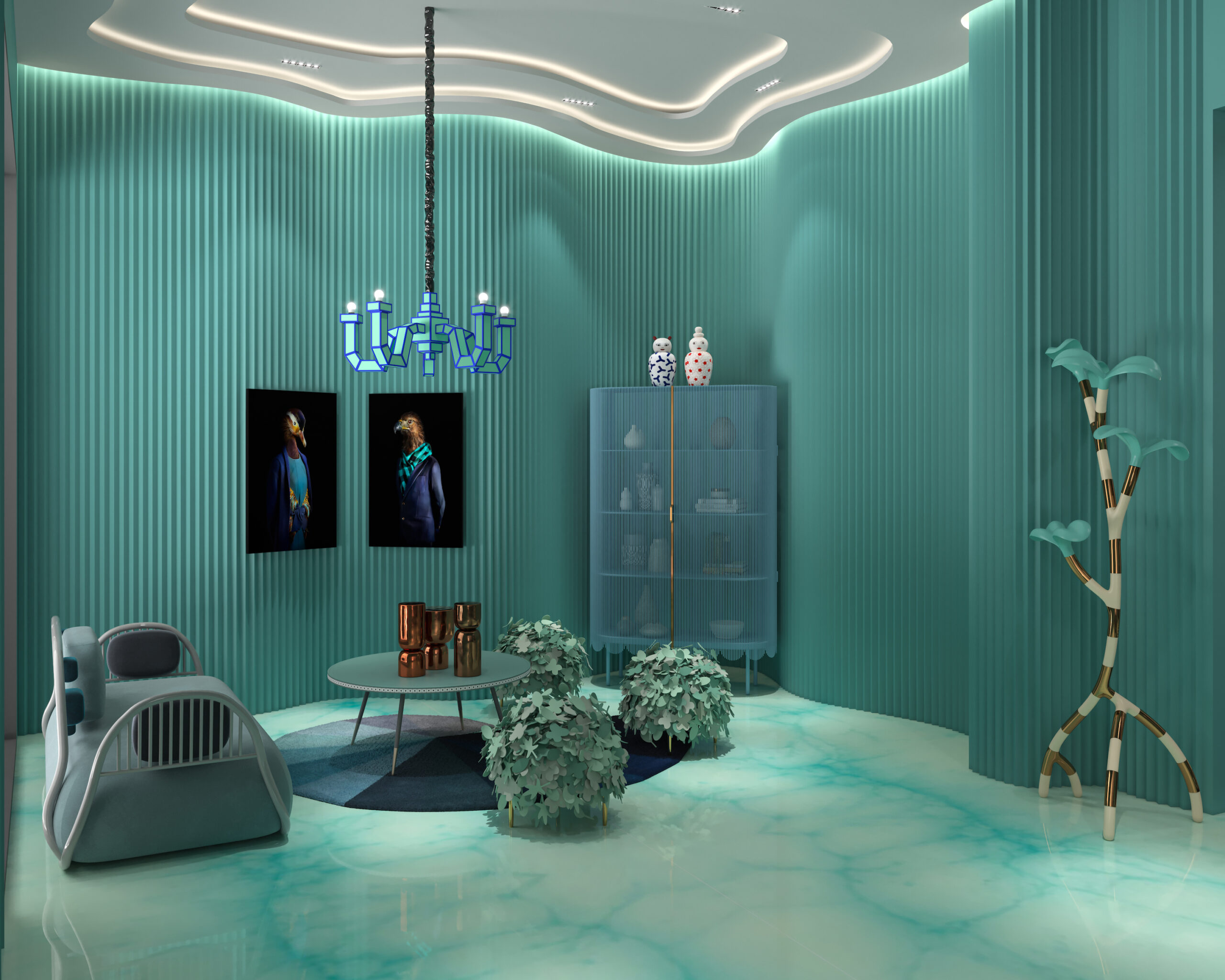

The designer’s influences knock back to his childhood, where he spent evenings after school and many a summer holiday in his parents’ garment factory. “That’s where I would create things. I was inspired by the way the master drafter magicked up patterns. Then, at home, my mother would make sure that her plates were arranged in a certain way, and her artefacts kept at a certain angle,” says the designer, who cites Tom Ford, Karl Lagerfeld, Thom Browne, Peter Marino, Yayoi Kusama, Robert Montgomery and Jaime Hayon amongst his other influences.
Syngh, who studied fashion and textiles at the Fashion Institute of Technology, New York, prides himself on trendspotting: “After university, I tried my hand at everything from garment design to home furnishings to visual merchandising and spaces. I observe trends very carefully and use colours in a way where, if you change a couple of things around, you’ll have a whole new space.”
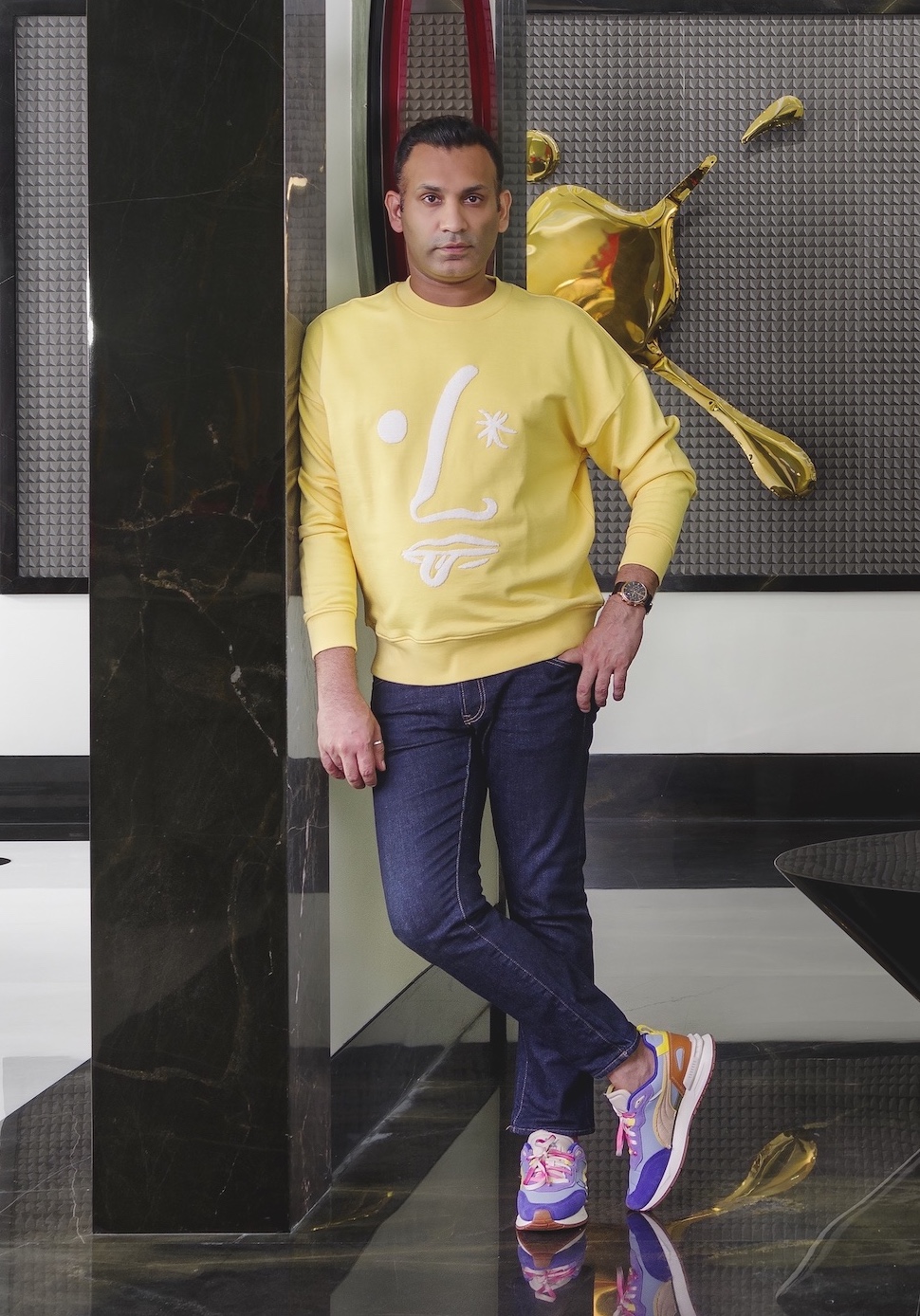
Last year, Syngh collaborated with luxury Indian design brand Scarlet Splendour to design a whimsical 9,000-square-foot farmhouse in New Delhi, dubbed Epiphany Blue, that channels a charcoal-tinted fairytale vibe. “We dreamt up a magical wonderland keeping four elements in mind: Colour, timelessness, quirkiness, and the owners’ happiest recollections. The result? A subterranean fantasy world with peculiar, anthropomorphic creatures,” he muses. “The abiding blueness is a hat-tip to one of their most-cherished memories: the day they became engaged, in a movie-worthy proposal at Tiffany & Co.”
Once a space has been designed, there will never be another with the same elements. A space should always reflect the style of its inhabitants.
Sanjyt Syngh, designer
After having lived in New York for almost nine years, Syngh moved to the UK to pursue his Masters in Interior and Spatial Design at Chelsea College of Art and Design (University of the Arts London). “I consulted with some brands for about three years before deciding to circle back to India to launch my own design studio in 2010,” recalls the South Delhi native, who appears to harbour a special love for farmhouses. In 2019, he transformed a prebuilt 2.5-acre farmhouse in Chattarpur, New Delhi into a chalet-esque hideaway, which, with its modern artworks, reclaimed wood panelling, gabled ceilings and brownstone walls, looks like it could easily belong in the Swiss Alps. Despite its magnetic tones, however, the house–which he christened Urban Chalet–has a curious grandmotherly quality. “It was designed as a weekend home for a Delhi-based family, so even with its brooding composition, it has a very homely spirit,” he notes.

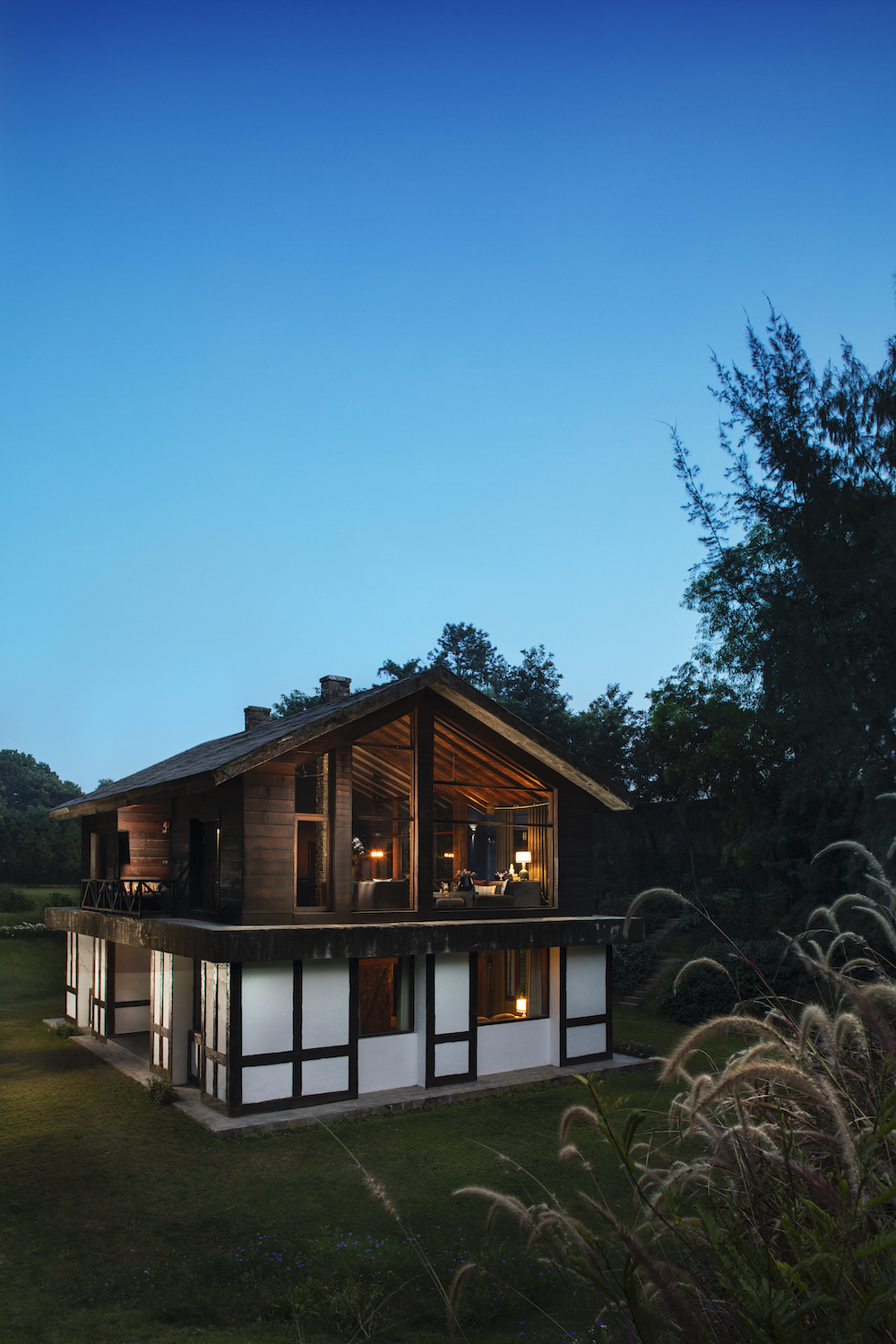
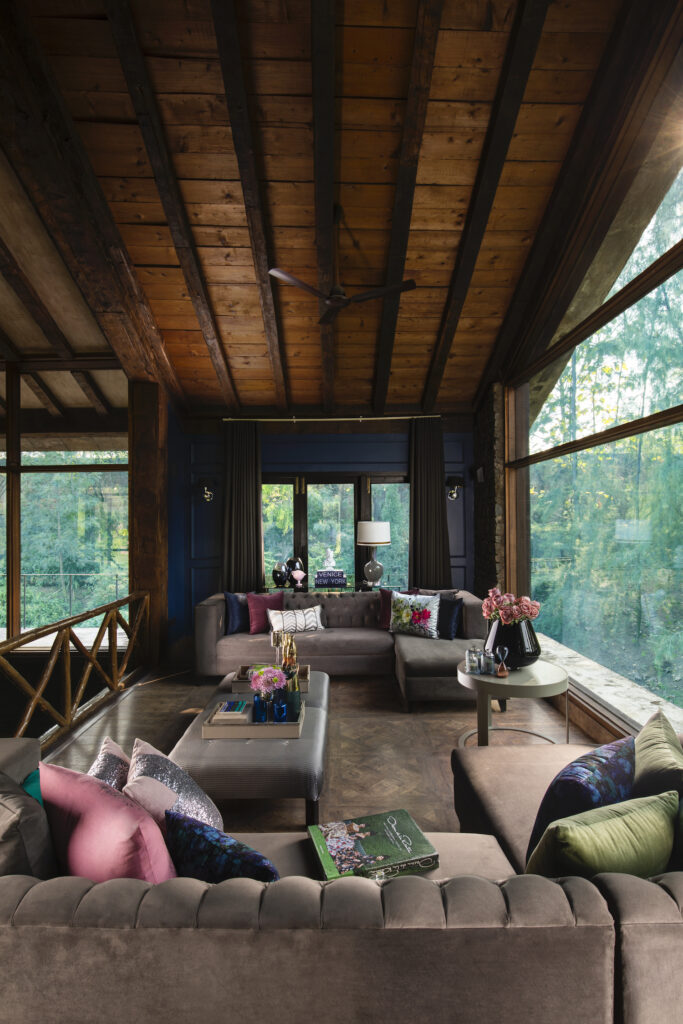
Syngh doesn’t have a holy grail when it comes to sourcing designs. “It keeps changing based on what a project needs. It’s a mixed bag, although I am personally not very big on antiques. I believe spaces should feel new and fresh. It’s the day and age of NFTs and the metaverse,” he declares. Syngh’s philosophy is mirrored in the fact that he doesn’t repeat concepts or details: “Once a space has been designed, there will never be another with the same elements. A space should always reflect the style of its inhabitants.”
That’s one rule I always follow while designing: A space shouldn’t be gender-specific unless it has specific needs.
Sanjyt Syngh
Indeed, when he took the design reins of his own South Delhi apartment a few years ago, he found personal expression in kingly palettes, glistening finishes, and artworks and sculptures that breathed a modish-meets-majestic air. Much like Syngh, the home brims with surprises: A noughts-and-crosses mosaic adorns one wall; large mirrored letters spell a profanity across another; while a larger-than-life sculpture of a gas cylinder squares off a passageway.

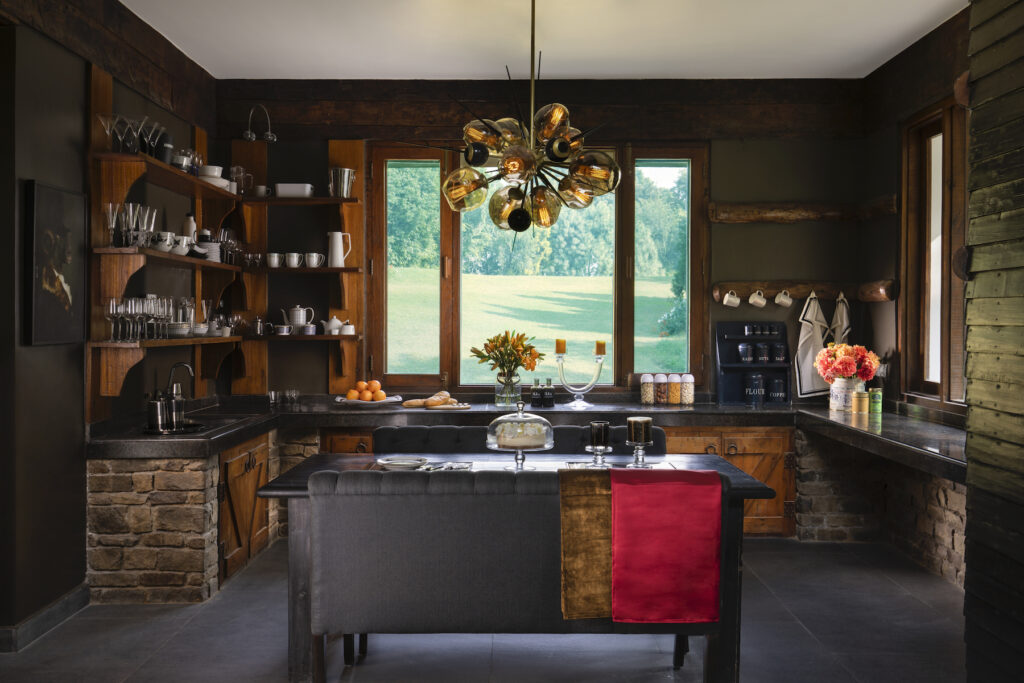
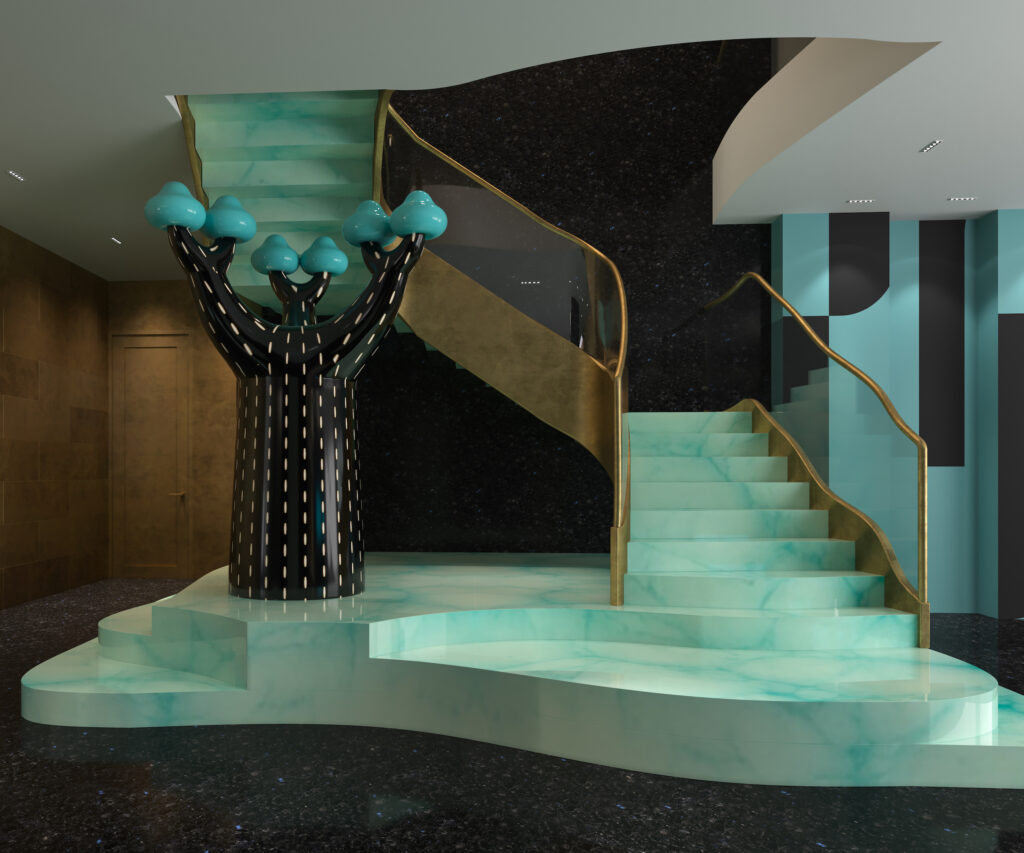
Ask him what trends he has noticed in recent times, and Syngh doesn’t hem or haw: “That’s always a tough question because there are so many. Sensory exploration is one of the top on that list. Surrealism is another. Inspired by the Brutalism and Suprematism movements, a lot of designers are holding a mirror to eternal geometry,” he says, continuing, “We hear a lot about androgyny in fashion, but not so much in interiors. That’s one rule I always follow while designing: A space shouldn’t be gender-specific unless it has specific needs.”
By now, it is evident that fashioning houses is an extension of Syngh’s personal style. “My style has evolved to a point where I’ve concluded that I like weird things, and by weird, I mean unique. Who says weird can’t be pretty?” he finishes, laughing.
Effect Magazine is brought to you by Effetto



